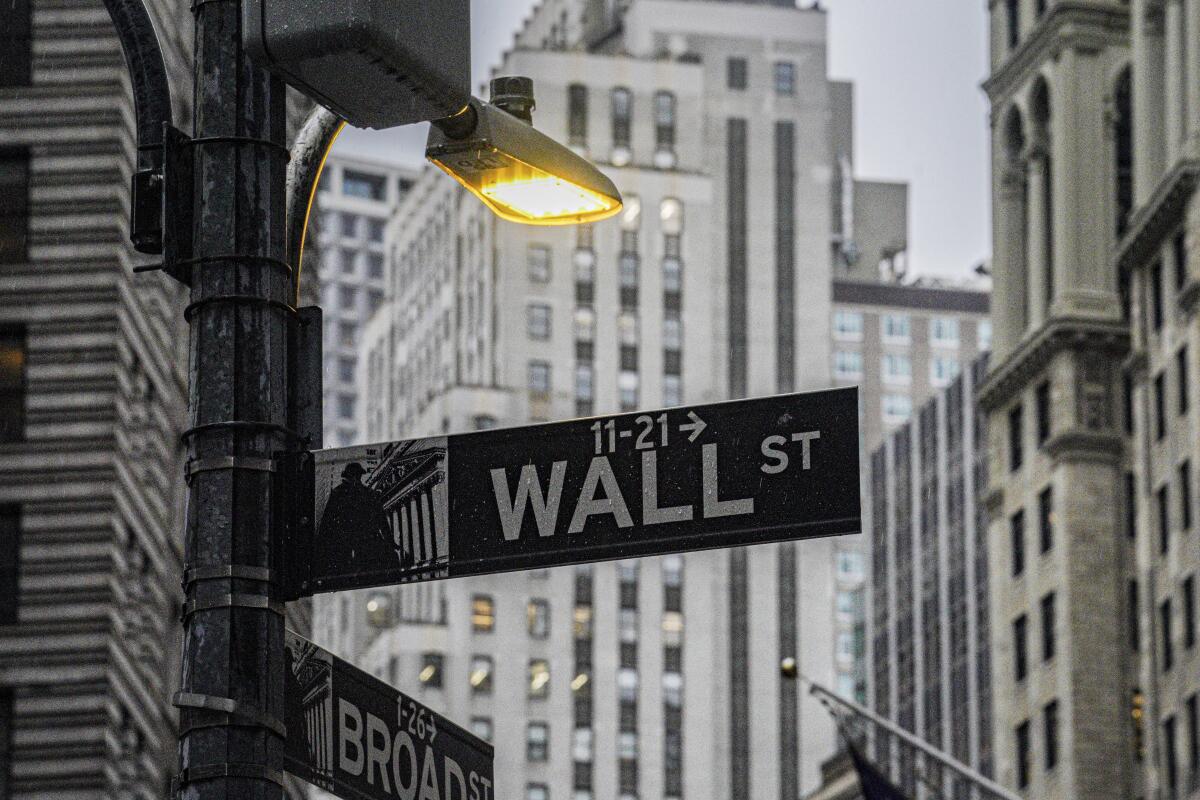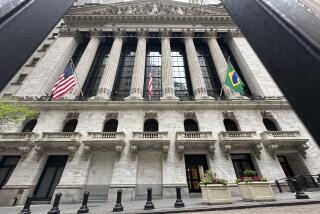Stocks lose ground as more earnings reports roll in; yields rise

A broad slide on Wall Street reversed two days of gains for stocks Wednesday, as Treasury yields climbed to multiyear highs, tempting traders with higher returns on relatively low-risk investments.
The pullback came as investors reviewed a mix of quarterly reports from several companies. Netflix and United Airlines rose sharply after releasing their quarterly results, while others, including Abbott Laboratories and M&T Bank, sank.
The Los Gatos, Calif.-based streamer added 2.4 million subscribers in the third quarter, beating the company’s and analysts’ estimates.
Major indexes rose in the early going, but their gains faded fast. The Standard & Poor’s 500 index fell 0.7%, the Dow Jones industrial average slipped 0.3% and the Nasdaq composite ended 0.9% lower. Small companies fell more than the rest of the market, sending the Russell 2000 index 1.7% lower.
Stocks were coming off two days of gains, but trading has been unsteady throughout.
“Today was interesting in that it was almost a back-to-reality check for the market,” said Quincy Krosby, chief equity strategist for LPL Financial. “Not only were the yields higher, you also had the dollar much stronger today, and that’s a recipe for difficulties for the market.”
The yield on the 10-year Treasury, which influences mortgage rates, climbed to 4.13%, its highest level since June 2008. It was at 4.02% late Tuesday. The yield on the two-year Treasury, which tends to track expectations for future Federal Reserve action, rose to 4.54% from 4.43%.
A sharp move in the three-month Treasury may have helped put traders in a selling mood. The yield briefly hit 4.01% before inching back to 3.98%. Should the three-month Treasury yield rise above that of the 10-year Treasury, what’s known as an inversion, that would be a strong warning that the economy could be headed for a recession.
“It takes a while for the three-month [Treasury] to invert, but it’s getting ever so closer to the 10-year,” Krosby said.
The S&P 500 fell 24.82 points to 3,695.16. The Dow lost 99.99 points to close at 30,423.81. The Nasdaq dropped 91.89 points to 10,680.51. The Russell 2000 gave up 30.20 points to end at 1,725.76.
Home builders and other housing-related companies fell Wednesday after a report showing that construction on new homes declined more than expected in September. Home builder Lennar fell 6% and home improvement retailer Lowe’s slid 4.8%.
U.S. crude oil prices rose 3.3%, giving a boost to energy stocks. Exxon Mobil rose 3%. The White House plans to announce another release of oil from the U.S. strategic reserve.
Investors have been focusing on the latest round of corporate earnings this week, looking for clues about how companies are dealing with the hottest inflation in four decades and how they intend to operate through the rest of the year and into 2023.
Netflix soared 13.1% after the company said it picked up 2.4 million subscribers during the July-September period, a comeback from a loss of 1.2 million customers during the first half of the year.
United Airlines rose 5% after reporting strong third-quarter results. American Airlines will report its results Thursday.
Household goods giant Procter & Gamble rose 0.9% after also reporting strong results. It joined a growing list of companies, including Hasbro and Johnson & Johnson, warning investors about a strong U.S. dollar cutting into revenue. A strong dollar decreases the value of overseas sales after converting the currency. The U.S. currency is now worth more than a euro for the first time in 20 years.
The dollar has gained strength versus currencies worldwide as inflation and recession concerns prompt investors to look for relatively stable investments. Governments and central banks worldwide are dealing with stubbornly hot inflation. British food prices rose at the fastest pace since 1980 last month, driving inflation back to a 40-year high.
The U.S. faces its own potential recession as high inflation on a variety of items, including food and clothing, barely budges and the Fed raises interest rates to temper the pace.
The Fed’s rate increases are meant to make borrowing more difficult and slow economic growth in an effort to tame inflation. The strategy risks stalling the already slowing U.S. economy and bringing on a recession.
“That’s the game of chicken that’s going on,” said Steve Chiavarone, senior portfolio manager at Federated Hermes. “The Fed can only restore price stability by hurting demand, i.e. causing a recession.”
Associated Press writers Joe McDonald and Matt Ott contributed to this report.
More to Read
Inside the business of entertainment
The Wide Shot brings you news, analysis and insights on everything from streaming wars to production — and what it all means for the future.
You may occasionally receive promotional content from the Los Angeles Times.











